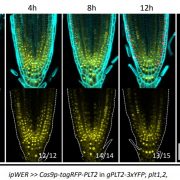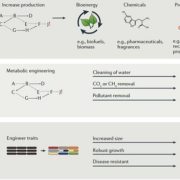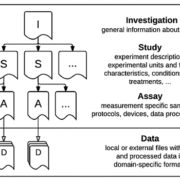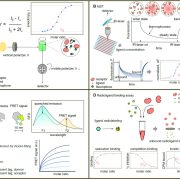Chlamydomonas photoreceptor gene editing by zinc-finger nucleases and CRISPR/Cas9
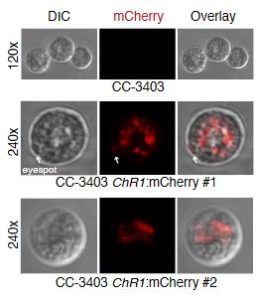 New genome editing technology, such as zinc-finger nucleases and CRISPR/Cas9, are revolutionizing reverse genetics studies because they allow fast and precise genetic modifications in many species. However, they require efficient transformation and selection methods. This is notably a problem for algae such as Chlamydomonas reinhardtii. Greiner et al. describe a procedure that creates antibiotic-resistant clones after successful genetic modification, thus making the selection step much more rapid. In addition, they made several improvements to current transformation protocols for both zinc-finger nucleases and CRISPR/Cas9. Their optimized methodologies allowed the disruption of photoreceptor genes and led to a better understanding of phototropism in Chlamydomonas. (Summary by Elisa Dell’Aglio) Plant Cell
New genome editing technology, such as zinc-finger nucleases and CRISPR/Cas9, are revolutionizing reverse genetics studies because they allow fast and precise genetic modifications in many species. However, they require efficient transformation and selection methods. This is notably a problem for algae such as Chlamydomonas reinhardtii. Greiner et al. describe a procedure that creates antibiotic-resistant clones after successful genetic modification, thus making the selection step much more rapid. In addition, they made several improvements to current transformation protocols for both zinc-finger nucleases and CRISPR/Cas9. Their optimized methodologies allowed the disruption of photoreceptor genes and led to a better understanding of phototropism in Chlamydomonas. (Summary by Elisa Dell’Aglio) Plant Cell


